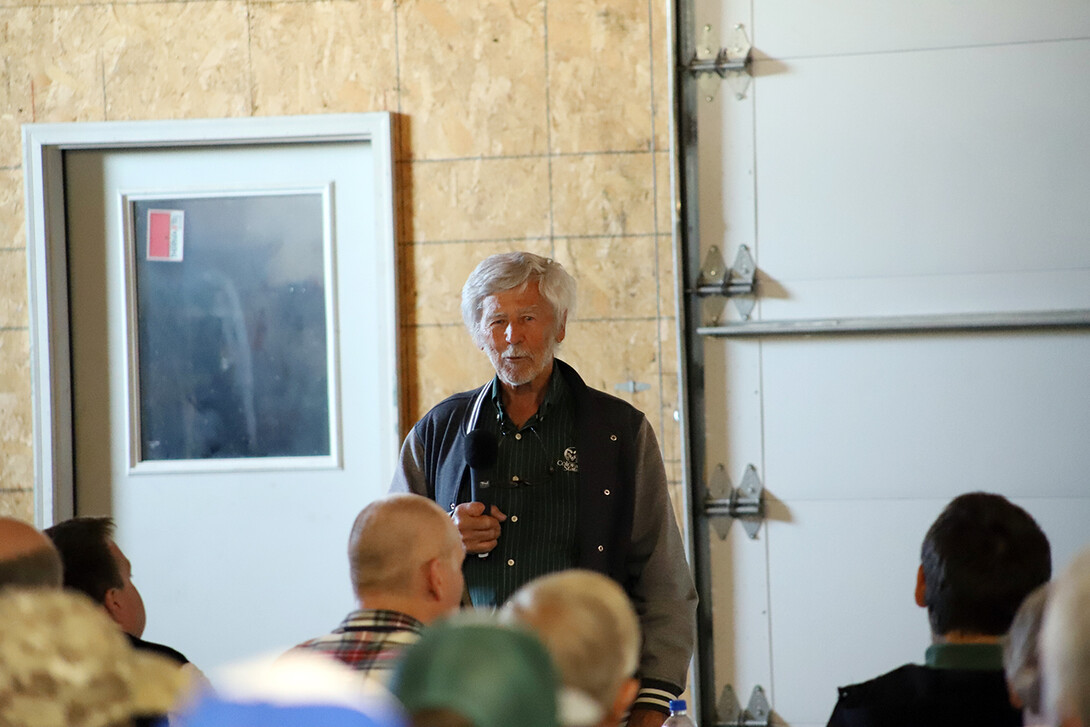
Lincoln, Neb. — The first installment of a planned 2024 Nebraska Soil Health School series was held on April 24 at the University of Nebraska-Lincoln High Plains Ag Lab in Sidney, Neb. The event addressed the semi-arid Panhandle climate and potential management practices for soil health and had over 60 attendees. Water is the most limiting factor for growing almost anything in the Panhandle of Nebraska, from crops to cover crops. The latter is a popular topic in soil health, as it keeps roots and biomass in the soil.
“There is a lot of talk about cover crop use, but a lot of the information comes from environments that are not like this (area),” said David Nielsen, a retired U.S. Department of Agriculture Research Service research agronomist and one of the two keynote speakers at the Sidney event. “Much of the information on cover crops comes from humid areas, where there is more precipitation and less evaporative demand.”
Nielsen said that in 2011-12, there was a lot of discussion on growing cover crops in mixtures. The information was coming from south and central Nebraska. “They claimed the cover crop mixtures used less water, but research found the mixtures used either the same or more water as a single species cover crop.”
Growers are often aware of their soil types and what will and won’t work and make management plans accordingly. Most farms in the Panhandle use some kind of no-till or residue management in their fields. The soil, a silt loam, in western Nebraska is very good for growing crops when there's moisture.
“Farmers need to be aware if you don't use that water that you save, you might as well not save it,” said Gary Peterson, Colorado State University professor emeritus and another keynote speaker at the event. Peterson did his master's degree projects at the UNL Panhandle Research Extension and Education Center in Scottsbluff. “You can’t save any of the water in a wheat-fallow system, so getting a crop in there to use it is important.”
Peterson said growing a grazing crop in fallow years to feed livestock is one way to use the water. He admits not everyone has the option of growing a cover crop for livestock, and if the region is in a drought, it may not work out in the long run. These are some of the issues research specialists are working on at the UNL High Plains Ag Lab (HPAL) in Sidney.
“All the different projects we have going on at the High Plains Ag Lab relate to the soil and its health,” said Cody Creech, Nebraska Extension dryland cropping specialist. “So, we’ve looked at this from a number of different angles.” The lab has studied everything from no-till to biochar and cover crops. The HPAL has also seen positive results with intensifying crop rotations. The grounds use flex rotations, where if the conditions are right and there is enough moisture, a cover crop can be grown in a field following wheat or in a fallow field.
Bijesh Maharjan, Nebraska Extension soil and nutrient management specialist and event organizer presented soil health measurements at the Nebraska Soil Health School. Unless there is some kind of benchmarking system, it is hard to make use of soil health measurements. Maharjan shared the soil health gap concept developed by his team, which can be used to benchmark soil health measurement in croplands with reference to native land. The soil health gap informs how far managed land can come from its native state and sets the highest possible soil health targets.
Jessica Groskopf, UNL agricultural economist, discussed carbon markets and the opportunity to engage in carbon credit markets. She said carbon markets are currently unregulated, and producers are working under voluntary markets where carbon aggregators are coming together to sell their credits for them. The USDA is putting together a list of carbon credit opportunities where growers will be able to find more information.
The event ended with a soil health demonstration by NRCS soil scientists Carlos Villareal and Riley Hackbart. The scientists presented the impacts of rainfall on various soil conditions - with or without residue, tilled at varying degrees, and native soil. The plot tour was called off due to high winds.
The other 2024 Nebraska Soil Health Schools are planned for August 6 in Kearney, in conjunction with the NE Grazing Conference, September 4 in Crawford, and September 5 in North Platte, in conjunction with UNL WCREEC Field Day. For more information, contact Nicole Heldt, research project coordinator in Maharjan lab at nheldt@unl.edu.







